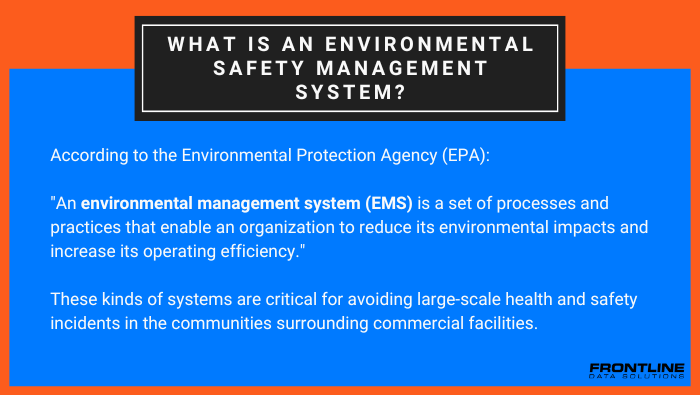In the fiscal year 2021, the EPA assessed a total of $1.06 billion for environmental penalties. And if businesses want to avoid a share of these fines in the future, they must implement strong environmental safety management systems within their facilities.
Rolling out this type of system, however, is a major undertaking and requires much attention to detail. Luckily, there already exists a benchmark for creating and enforcing an effective environmental safety program: ISO 14001.
What is ISO 14001?
The International Standards Organization (ISO) is an NGO made up of standards associations from more than 160 countries. Together, these national bodies develop standards for products and services across industries like manufacturing, technology, and civil engineering.
One of the most widely used standards is ISO 14000 for environmental compliance. Within this category is ISO 14001, a standard which outlines the specific criteria for environmental management systems.

The goal of ISO 14001 is to eliminate the amount of waste within your processes and to improve the overall efficiency of your operation. The standard does this by requiring you to consider the environmental impact of all your processes and equipment.
Here are some of the areas that it covers:
- Soil contamination
- Wastewater management
- Air quality and pollution
- Natural resource consumption and conservation
Reviewing these areas in depth is something that many businesses fail to do on a regular basis. But this process of self-reflection is very valuable not only for mitigating environmental risks but for finding operational inefficiencies as well.
Requirements for ISO 14001
There are technically no requirements for ISO 14001 because companies aren’t required by law to follow its guidelines. However, if you are trying to follow the standard, you’ll need detailed records of your environmental safety program and the compliance measures you have in place.
Here are some examples of the types of documentation you’ll need:
- Risk assessments
- Corrective action procedures
- Environmental policies
- Site environmental goals and methods
- Process control measures
- Training and communication of ISO 14001-related measures
- Overall scope and objective of the environmental safety management system
Essentially, you’ll need a thorough record of all the ways you’re implementing ISO 14001 principles at your site. While this standard will help shape and guide the systems you put in place, it’s up to your team to enforce the initiatives you’ve created.
A good place to start is with an in-depth analysis of your current system. What works? How easy is it to enforce? Which areas serve little to no purpose?
Once you have a better idea of your current approach, you can start to brainstorm a new system that better aligns with the ISO’s recommendations. You might not be able to create a completely clean slate, but that’s okay.
If the changes you’re making have a positive impact on your site’s environmental performance, you’re heading in the right direction. Like any safety goal, ISO 14001 compliance should be a constant work in progress.
ISO 14001 certification
The ISO doesn’t offer ISO 14001 certification services itself; however, many third-party companies do. These businesses offer different training on topics like ISO 14001 principles and how to create processes in compliance with those concepts.
Sites that consider certification typically do so for two main reasons:
- To ensure that their environmental safety management systems are effective
- To show suppliers and customers that their operations are safe and reliable
If you’re interested in pursuing some form of ISO 14001 certification, read more what to look for here.



